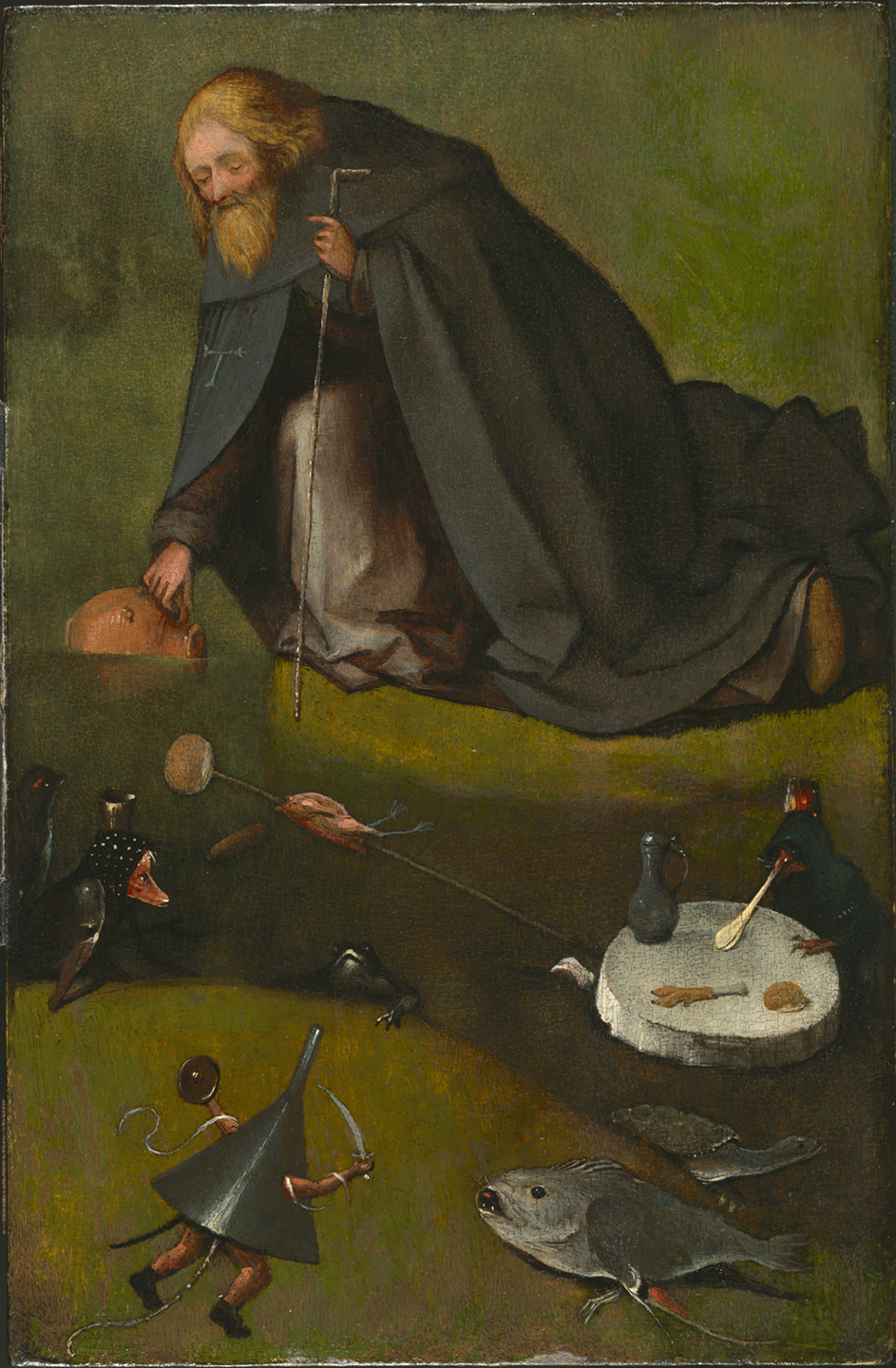
Hieronymus Bosch (Netherlandish, circa 1450–1516), “The Temptation of St Anthony,” circa 1510-1520, oil on oak panel, 15 3⁄16 by 9 7⁄8 inches. The Nelson-Atkins Museum of Art, Kansas City, Mo., purchase: William Rockhill Nelson Trust.
KANSAS CITY, MO. — An oil-on-wood panel acquired by the Nelson-Atkins Museum of Art in the 1930s and assigned to the workshop of artist Hieronymus Bosch has now been attributed to the artist himself. “The Temptation of St. Anthony” was loaned to Het Noordbrabents Museum in Den Bosch, The Netherlands, which is Bosch’s hometown, for a major exhibition celebrating the 500th anniversary of the artist’s death. That exhibition, “Jheronimous Bosch–Visions of Genius,” opens February 13.
“We are delighted with this major discovery by the Bosch Research and Conservation Project (BRCP),” said Julián Zugazagoitia, Menefee D. and Mary Louise Blackwell CEO and director of the Nelson-Atkins. “When museums lend great works, great things can happen. The scientific and scholarly research behind this authentication is one of the transformative achievements leading up to this exhibition, and Kansas City and the arts community is anxious to celebrate its return to see this elevated masterpiece through new eyes.”
In a news release, BRCP called the attribution “a significant addition to the small body of work produced by Hieronymus Bosch.” The painting, which dates from 1500 to 1510, was last on view at the Nelson-Atkins in 2003. The interest of the BRCP team was piqued when they saw the painting in the Nelson-Atkins catalog and requested a copy of an infrared reflectogram that allowed them to study the underdrawing of the panel. The team was finalizing details of the exhibition and, intrigued by certain details in the panel, came to the Nelson-Atkins in September 2015 to study the panel in person. Assisted by Rima Girnius, associate curator of European painting and specialist in the early Modern German and Dutch art, and Scott Heffley, senior conservator, paintings, they performed a number of technical examinations that confirmed their earlier impressions.
“Discoveries such as this do not occur on a regular basis, and I feel incredibly fortunate to have been present,” said Girnius. “There are 25 paintings attributed to Bosch in the entire world with only four in the United States. Now there are five and one of them happens to be at the Nelson-Atkins.”
Bosch typically sketched an underdrawing over the ground layer of his oak panels using a coarse brush with thin paint, which was apparent to the team when examining the panel. Watery lines could be seen in the hair and beard of St Anthony, as well as in the folds of his cloak and robe, and the outlines of the jug. Bosch also oftentimes changed his initial designs while he was still painting, offering a glimpse into his thought process. The jug in the painting originally had a different shape, and changes were also made to folds of cloak and the protruding back foot.
The BRCP team also discovered that the panel is a fragment of an originally much larger one. St Anthony is the principal figure in what the team believes is the wing of a dismantled triptych. Because of the immense volume of documentation produced by the BRCP providing artistic context, the painting “can now be ascribed to Bosch with confidence,” according to the team.
The discovery of this authentic Bosh painting comes on the eve of a major exhibition of Dutch art at the Nelson-Atkins. “Reflecting Class in the Age of Rembrandt and Vermeer,” curated by Ronni Baer, the William and Ann Elfers senior curator of paintings, art of Europe, at the Museum of Fine Arts, Boston (MFA), opens February 24 and is the first exhibition to explore Seventeenth Century Dutch painting through the lens of social class. It also represents the first time a painting by the celebrated artist Johannes Vermeer will be seen in Kansas City. Artists in this exhibition include Rembrandt, Jan Steen, Frans Hals, Pieter de Hooch, Gerard ter Borch and Gerrit Dou, among others. Loans from Amsterdam, Paris, Berlin, Munich, Budapest, and London will complement the works coming from public and private collections in North America.
The Nelson-Atkins Museum of Art is at 45th and Oak Streets. For information, 816-751-1278 or www.nelson-atkins.org.

